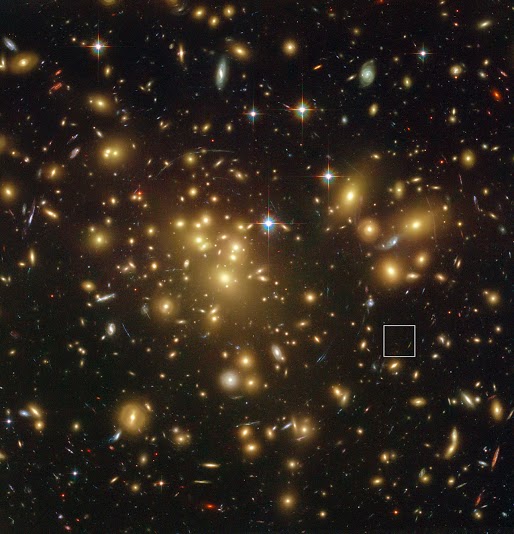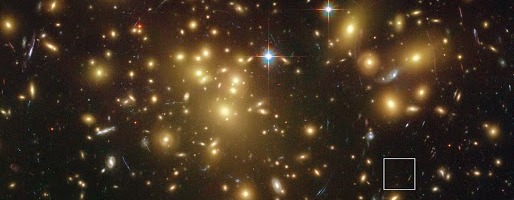
The galaxy A1689-zD1 is located in the box although it is still so faint that it is barely seen in this picture. Until now astronomers were worried that such distant galaxies would not be detectable using the currently available equipment. (Image courtesy of NASA; ESA; L. Bradley (Johns Hopkins University); R. Bouwens (University of California, Santa Cruz); H. Ford (Johns Hopkins University); and G. Illingworth (University of California, Santa Cruz))
A galaxy from the early universe is providing new insight on the formation of stars. Researchers have found one of the youngest and most remote galaxies, estimated to have formed when the Universe was approximately 700 million years old.
The astronomers believe the galaxy has either been consistently forming stars at a moderate rate since 560 million years after the Big Bang, or that the galaxy underwent a period of extreme starburst rapidly before slowing down.
Until these findings were made astronomers were worried that such distant galaxies would not be detectable using the currently available equipment.
Original research paper published in Nature on March 2, 2015.
Names and affiliations of selected authors



